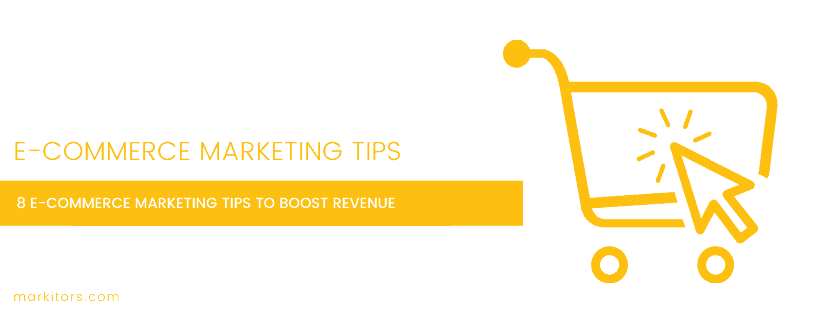
Since 2010, online retail sales have exploded around the globe, but particularly here in the US.
In fact, according to data from the US Census Bureau, online sales make up over 12% of total retail sales in 2020. That’s compared to under 4% a decade earlier.
Source: The US Census Bureau
The e-commerce boom created a huge opportunity for many struggling brick and mortar retailers to find new life. Now, there are over 7.1 million online retailers in the world, and an incredible 1.8 million of them operate in the United States.
If you want your business to rise above the rest, your e-commerce marketing strategies have to be up to par.
Thankfully, we’ve got some top tips to help you make that the case, and boost your revenue while you’re at it! Follow along and learn more.
1.Use e-commerce SEO to boost your product and category page rankings in search engines
Our top e-commerce marketing tip is to optimize your website for search engines with e-commerce search engine optimization (SEO).
SEO can help increase organic web traffic, and that leads to more sales without the need for expensive paid ads. It all starts with an SEO audit to find where your site needs improvement to connect with search engines properly.
For example, SEO audits can help eliminate duplicate content issues. These are common on e-commerce websites that have many similar product pages with near identical product descriptions. Duplicate content can hurt your website’s visibility in search engines, reducing organic web traffic.
To avoid that, there are several best practices and solutions you can consider implementing:
- The best way to deal with duplicate content is to use canonicalization to indicate your preferred URL to Google. A canonical URL is a URL that Google thinks is the most representative of your site based on a set of duplicate pages. Using rel=canonical <link> tags and rel=canonical HTTP headers you can point to the canonical URL of your choice.
- If you’ve recently restructured your site, try using 301 redirects to avoid duplicate content.
- Remember to keep internal linking consistent. So if you link to https://www.example.com/product, make sure you don’t also link to https://www.example.com/product/index.htm or https://www.example.com/product/.
- Use top-level domains. For example, if your business is in Canada, Google is more likely to recognize your country-specific content if you have a domain that ends in .ca instead of .ge.
Also, it’s important to note some SEOs will recommend blocking Google’s ability to crawl duplicate content with noindex meta tags. However, “Google does not recommend blocking crawler access to duplicate content on your website.” Noindex meta tags should instead only be used to block placeholder pages, not duplicate content.
Most importantly, you need to write unique product and category descriptions so Google doesn’t confuse any of your pages and can properly index them in search results. For example, if you sell products globally, make sure you are using the correct unique product identifier, or Google won’t show your product in the right country.
After you’ve fixed your duplicate content issues, consider addressing titles, meta descriptions, header tags, and optimizing URLs using as simple a structure as possible.
You can also try adding reviews with Schema Markup to product and category pages. Schema.org Product markup allows you to create detailed product information including, price, availability, and review ratings right on Search results.
For example, these screenshots show the same result on Google before and after the simple optimizations discussed above.

 2.Create a blog to improve organic website traffic
2.Create a blog to improve organic website traffic
The best e-commerce marketing ideas are ones that focus not only on boosting revenue but also on ROI. That’s why we’ll discuss content marketing, and in particular, blogging first.
Blogging is one of the best ways for e-commerce businesses to secure a strong return for their marketing investment. Without paying for expensive ads from Google, Instagram, or Facebook, you can attract visitors to your site and turn them into customers.
In fact, according to HubSpot, blogging increases businesses’ organic web traffic by an average of 55%.
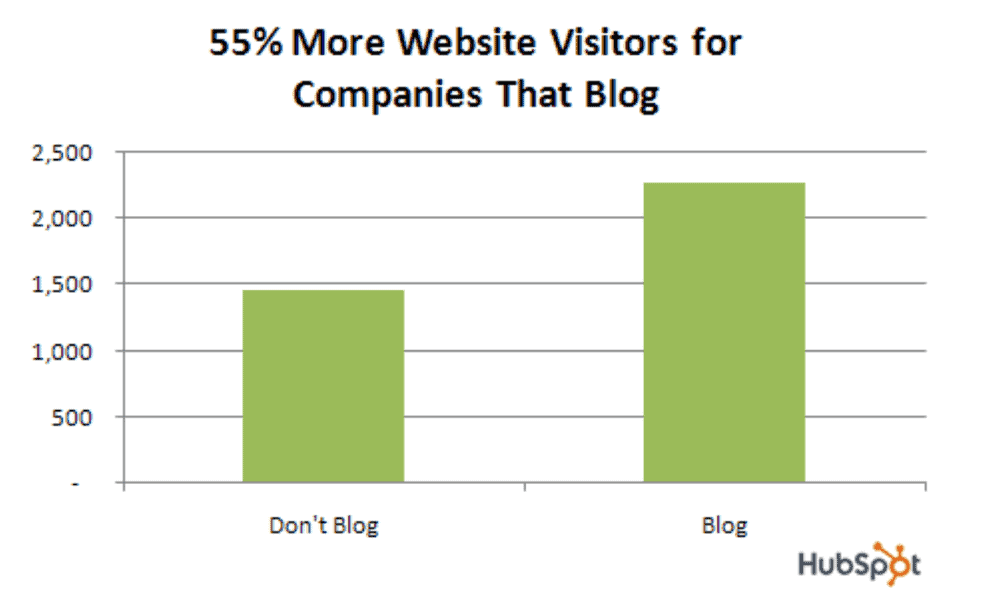 Source: HubSpot
Source: HubSpot
How do blogs do it? Blogs work as the foundation of a search engine optimization strategy. SEO uses quality content, technical optimizations, and more to improve your website’s visibility in search engines.
That’s probably why every major e-commerce site has a blog, from Amazon to small, local e-commerce businesses.
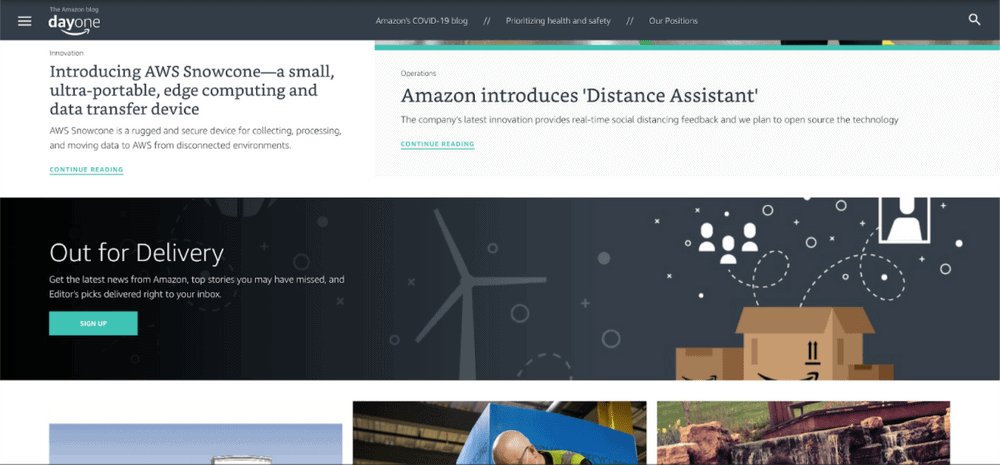
Large companies like Amazon mainly use their blogs as a means to connect with their community and small businesses. Both of the blogs below found on Amazon illustrate their intent isn’t necessarily to sell, just to connect with website visitors.
 Smaller e-commerce companies can do the same, but it makes more sense to write blogs that drive conversions.
Smaller e-commerce companies can do the same, but it makes more sense to write blogs that drive conversions.
The linen company Au Lit Fine has a detailed linens blog where they try to do just that. Their blogs educate customers about specific products, which helps with up-selling and cross-selling techniques (more on that in a moment).

Au Lit Fine’s blog posts include gift guides, how-to articles, and top tips blogs, that are all designed to gently push visitors toward buying products. This soft selling tactic can be very effective.
3.Upsell and Cross-sell your products
If you’ve been in the retail industry for a while, you know just how effective upselling and cross-selling can be. That hasn’t changed in the e-commerce world.
Cross-selling and upselling may be more important than ever before. For example, Amazon has been known to make up to 35% of its revenue from cross-selling alone.
Cross-selling is when retailers attempt to get customers to supplement their initial purchase with products that compliment it.
For example, Best-Buy cross-sells products on every product page. They also offer related products that you can add to your cart with just a click and an option to bundle your product with a family of complementary products.
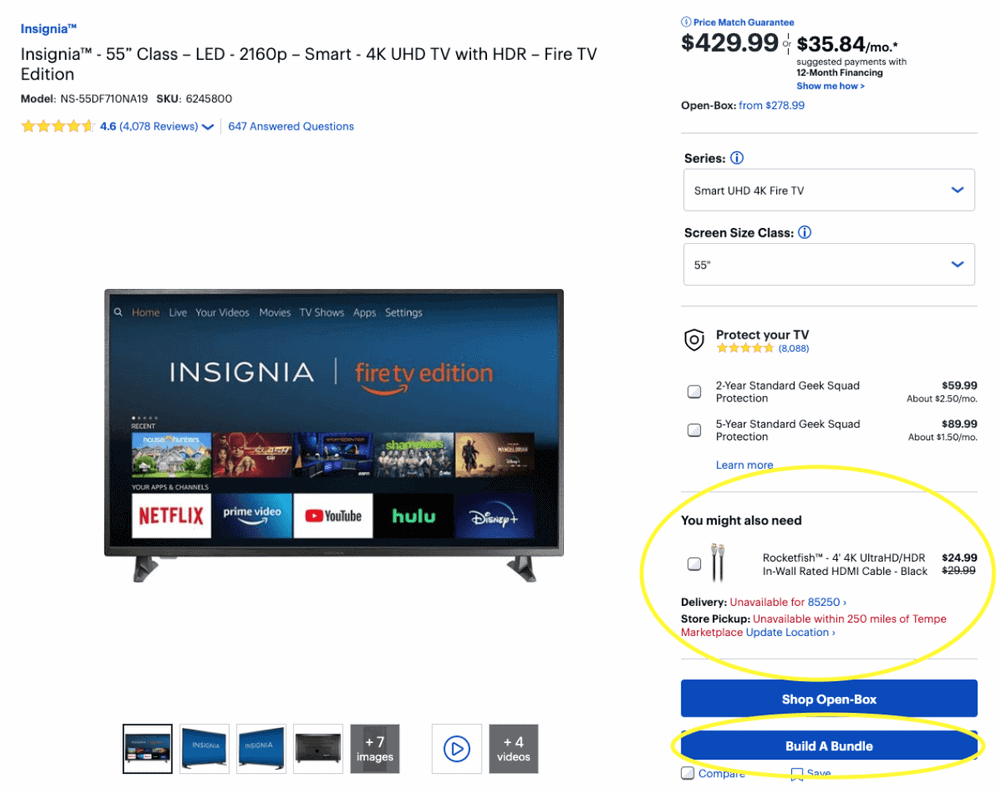
You can see how cross-selling can lead to a customer leaving with far more than they originally intended to buy.
Then there’s upselling. Upselling is when retailers attempt to push a more expensive model in the same product family on a customer or to enhance the original purchase with additional features or services.
One of the most common forms of upselling in e-commerce is when companies offer protection and installation plans during checkout.
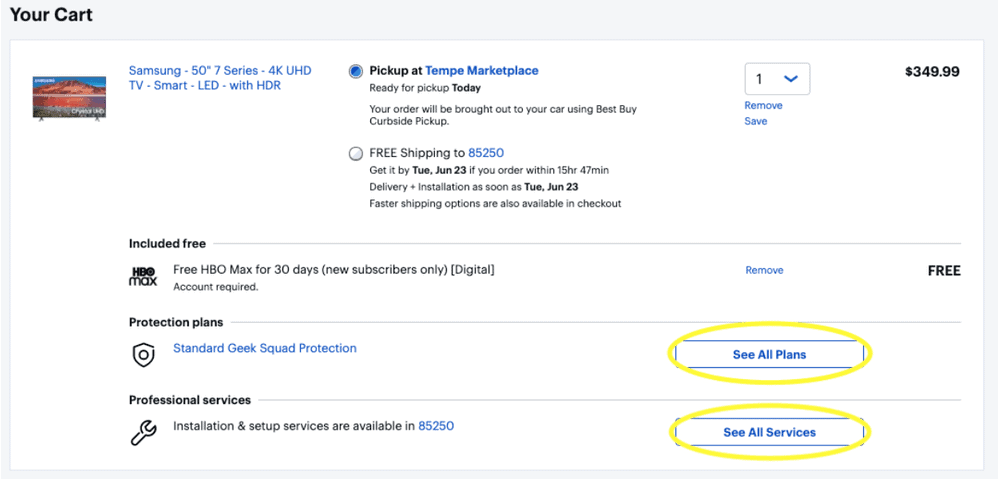
Above is an example from Best Buy where they get customers to buy hundreds of dollars worth of installation and protection plan services before checkout.
If you’re looking to start upselling on your website, try using tools like Bold Commerce’s Product Upsell app or One-Click Upsell by Zipify to make the process easier.
4.Ask for reviews and recommendations
One of the simplest e-commerce marketing strategies to execute is asking for reviews and recommendations from customers.
Sometimes new e-commerce retailers are nervous to ask for reviews or send emails to a customer after a purchase—they shouldn’t be! Offer a 5-10% discount incentive for first-time customers or enter reviews in a giveaway as an incentive for first-time customers to leave feedback.
Business reviews have proven their ability to increase revenue. In fact, according to data from Mediapost, businesses average 82.5 total reviews across all review sites, and those with more than the average number of reviews earned 54% more in annual revenue than those with less than the average number.
So make sure you’re asking for reviews after each purchase, it can make a huge difference in your annual revenue figures.
5.Optimize your website for mobile customers
Mobile sales are increasing so quickly that by the end of 2020, they are expected to make up more than half of all e-commerce sales, according to Business Insider.
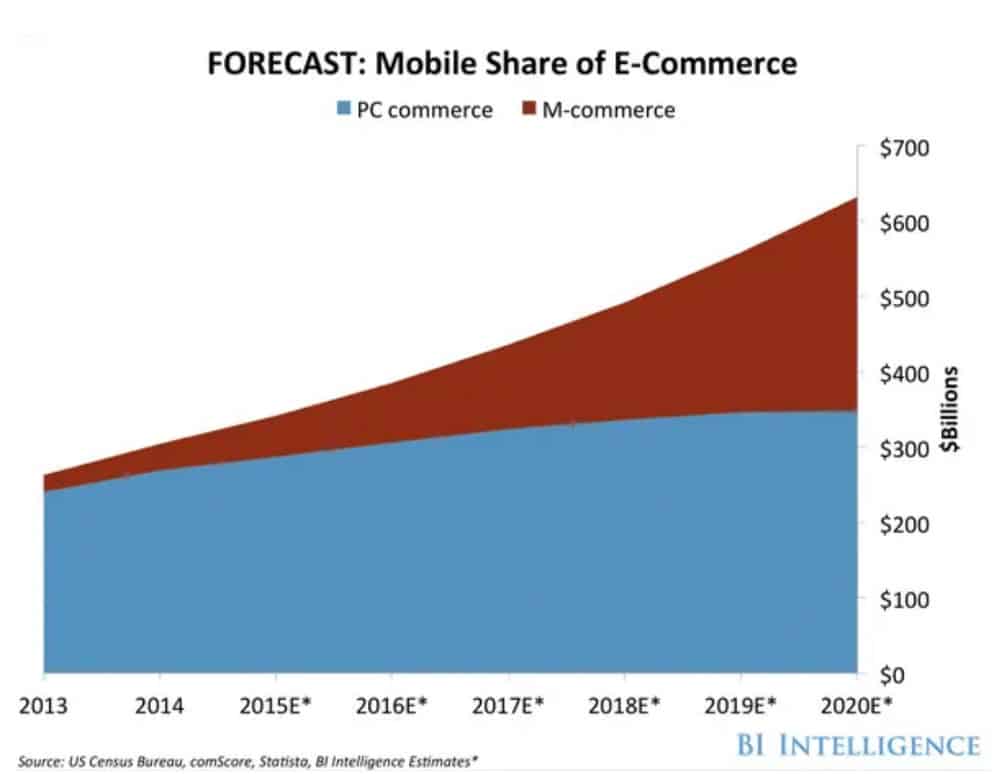 Source: Business Insider
Source: Business Insider
Considering the rising sales figures, and the fact that 47% of internet users expect a mobile site to load in two seconds or less, mobile optimization is incredibly important for e-commerce companies.
The best way to get started with mobile optimization is to use Google’s Mobile-Friendly Test. The test will show you what your site looks like to mobile users and offer tips to make it more mobile-friendly if there are any.
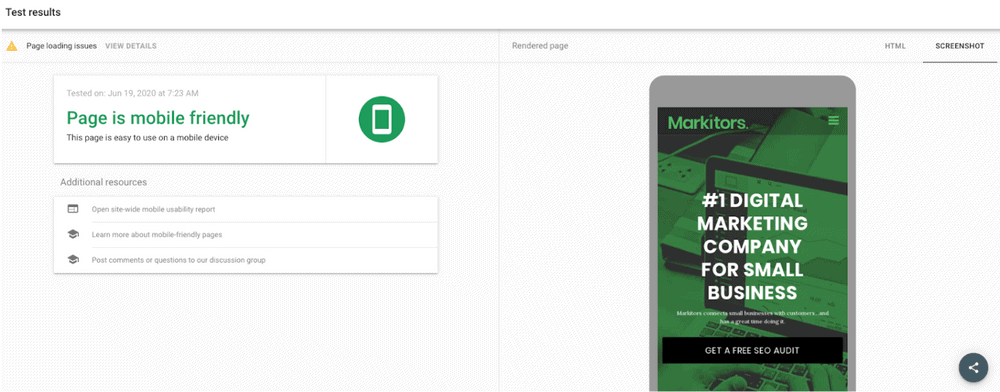 If you find your website isn’t performing up to standard on the mobile-friendly test, try using Accelerated Mobile Pages (AMP). It’s a way to create user-friendly mobile pages from your current site.
If you find your website isn’t performing up to standard on the mobile-friendly test, try using Accelerated Mobile Pages (AMP). It’s a way to create user-friendly mobile pages from your current site.
Google created the pages to help ‘build the future web together’ and allow you to create consistently fast, good-looking, and high-performing mobile pages.
Below is an example of what your site could look like with AMP (right side) and without AMP (left side).
 And it’s not just the looks that are affected by AMP pages, the page on the right will be faster and less likely to crash as well,
And it’s not just the looks that are affected by AMP pages, the page on the right will be faster and less likely to crash as well,
If you need help optimizing your website for mobile devices, contact technical SEO support for more information.
6.Focus on customer service and support
“We see our customers as invited guests to a party, and we are the hosts. It’s our job every day to make every important aspect of the customer experience a little bit better.” – Jeff Bezos
Jeff Bezos has always said what makes Amazon successful is its consistent dedication to customer service. It only makes sense to follow his lead when it comes to e-commerce.
Here are just a few customer service tips to get you started on creating a consistent customer service experience at your e-commerce company:
- Try live chat to speed up response times
- Use customer service software to manage reviews, track customer feedback, and coordinate customer service responses across your business.
- Post FAQs on a dedicated page, social media, or on your blog
- Build an informative blog
- Offer 24-hour support over the phone if you ship internationally
7. Share your e-commerce experience in industry publications and online journals
Sharing your experience as an e-commerce business owner online in industry publications and online journals is a great way to boost your revenue.
We aren’t talking about publishing sales pieces here. Rather these should be informative articles about your products or industry for the e-commerce community or your customers.
Or they could even be about your business’ story. Here’s an example from Little Seed Farm, published on Beauty Independent, that details the company’s story from startup dreamers to having their products sold in Target and Kroger.
 These articles can be valuable for your business in two respects. First, by featuring your words or story on an authoritative site, you position your company as an industry leader and build brand awareness.
These articles can be valuable for your business in two respects. First, by featuring your words or story on an authoritative site, you position your company as an industry leader and build brand awareness.
Second, these articles help build relevant, authoritative links for your website. That signals your site’s authority and credibility to search engines and helps to improve rankings in results pages.
Digital PR services can help you secure spots to place articles if you don’t have the industry connections. It may take time to write quality pieces to share, but this e-commerce marketing idea is well-worth the costs.
8.Set up e-commerce capabilities on your social platforms
The final e-commerce marketing tip we have for you involves leveraging social media e-commerce platforms. Social media sites such as Facebook, Twitter, and Pinterest have all introduced “buy buttons” since 2018. This means shoppers can now make purchases without having to leave the platform.
If you don’t already have your social shops set up, make sure you do so ASAP. These are great sales platforms. Popular social media platforms to use are Instagram’s business shop and Pinterest’s business shop.
Both sites charge a fee for sales, so you’ll need to make sure you’re only selling products with strong margins on social platforms. Still, the high traffic on the sites usually makes direct sales features worth using.
Need some e-commerce help?
Not every business owner or marketing manager has the know-how or time to implement the e-commerce marketing strategies listed in this article.
However, there are always SEO experts you can turn to for help. If you’re looking to boost your e-commerce site’s revenue, contact us and we can help boost your website’s visibility on search engines through SEO and digital PR.
Markitors is a digital marketing agency specializing in SEO. We help small businesses rank higher on Google to get more traffic to their websites and increase revenue. Explore what’s in our SEO toolbox: audits and keyword research, digital PR, technical SEO, and local SEO.








